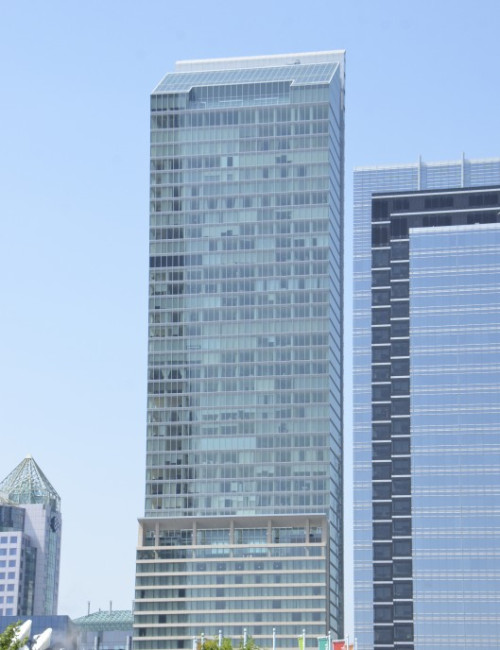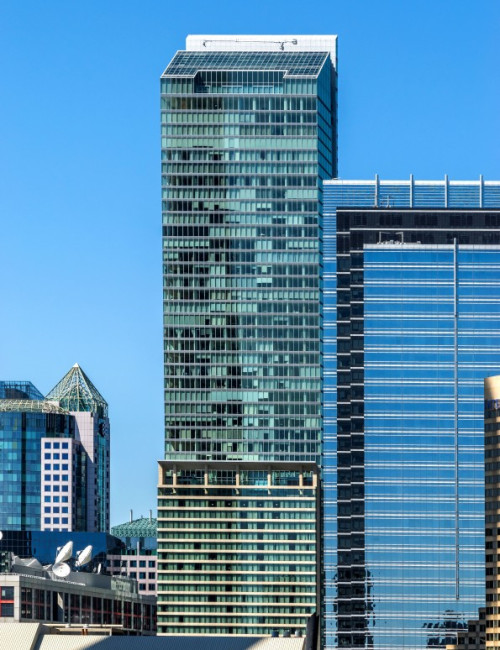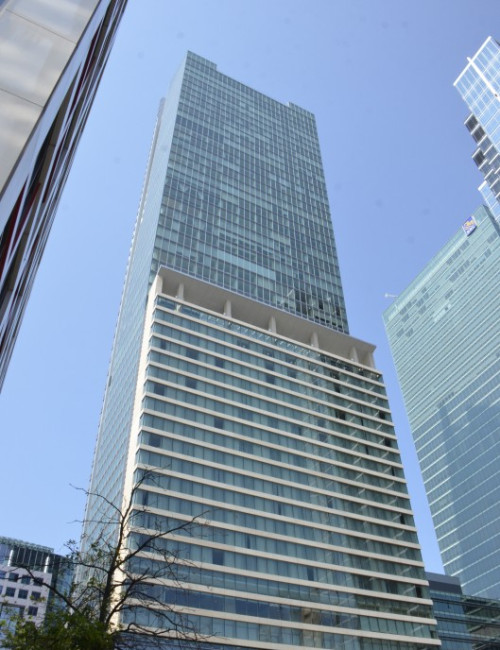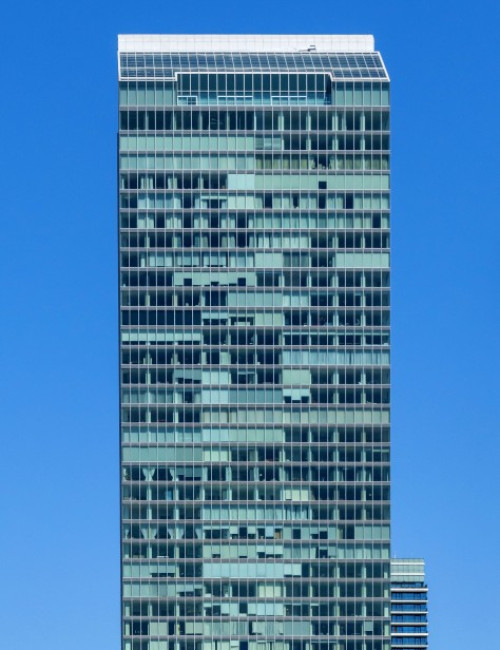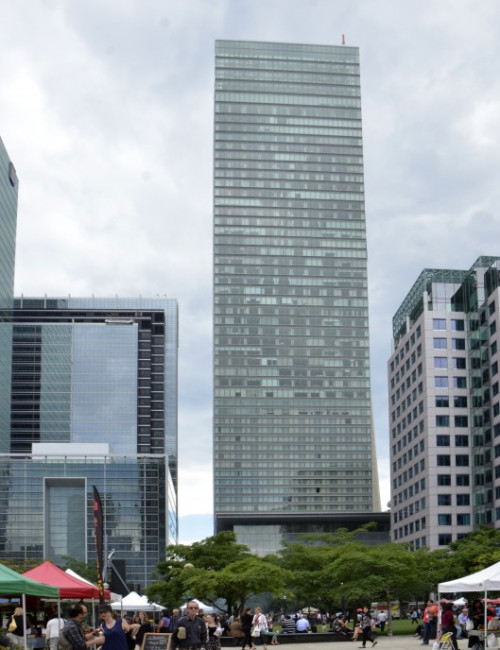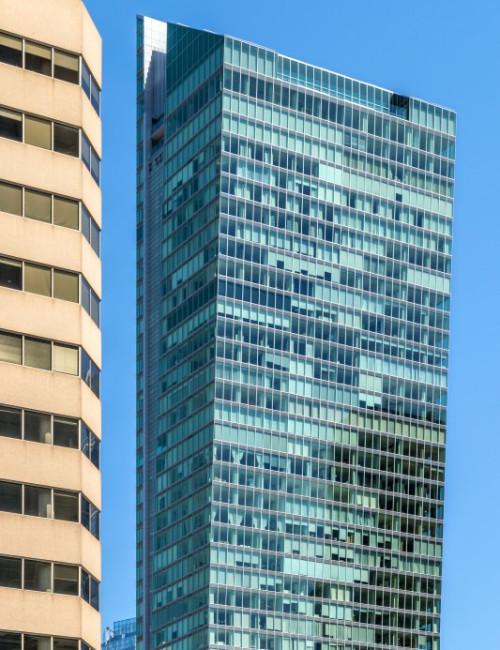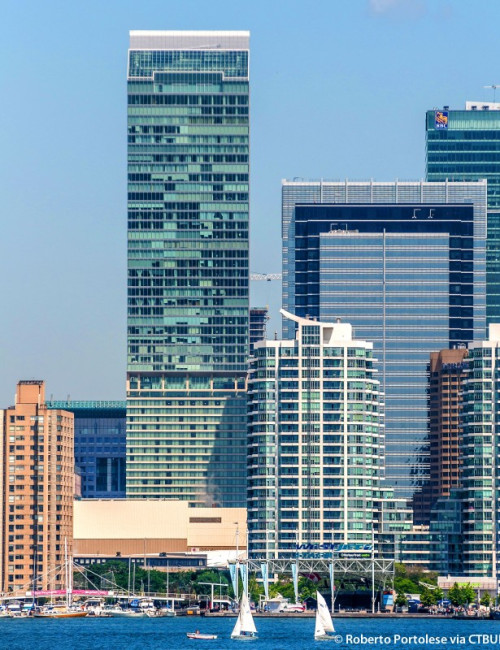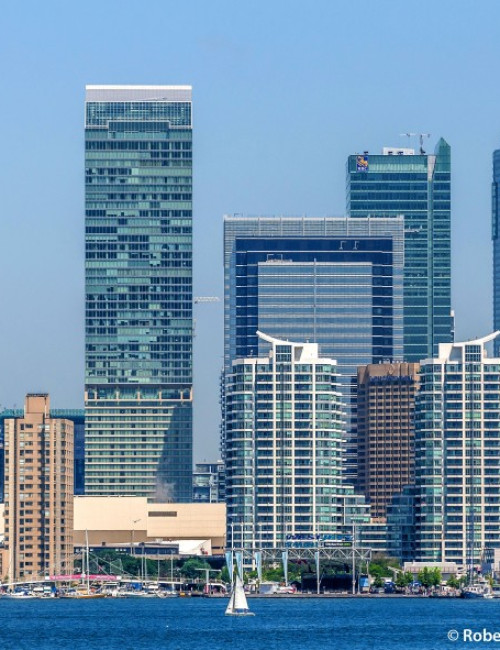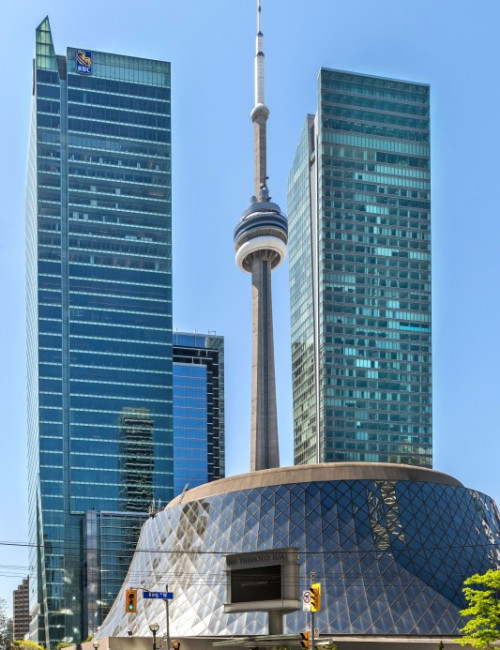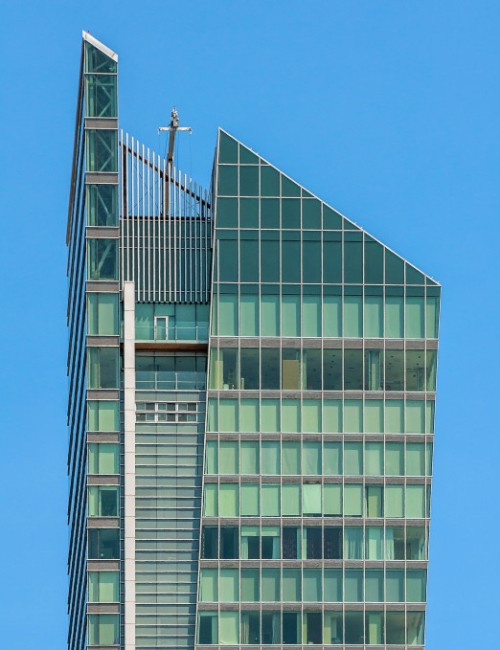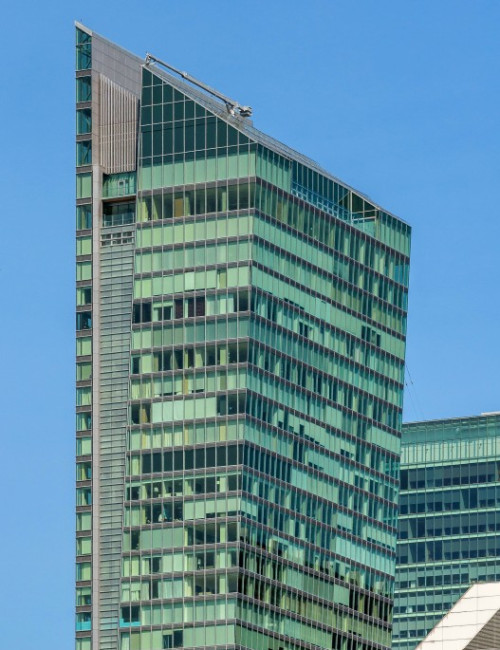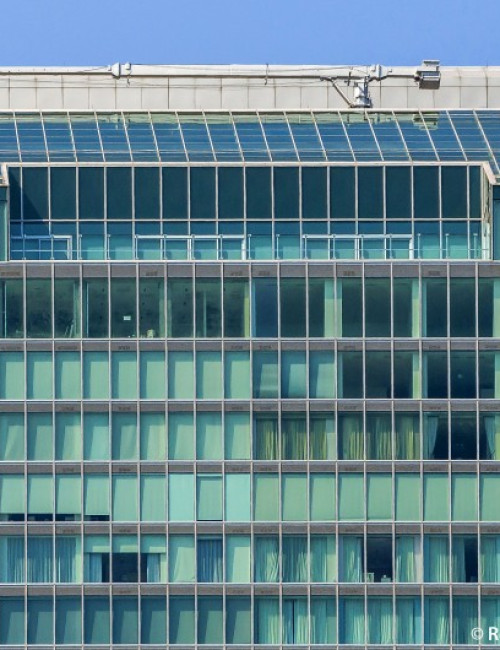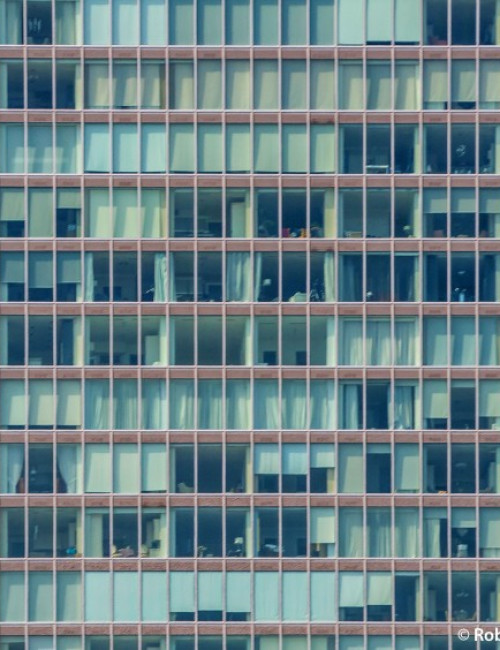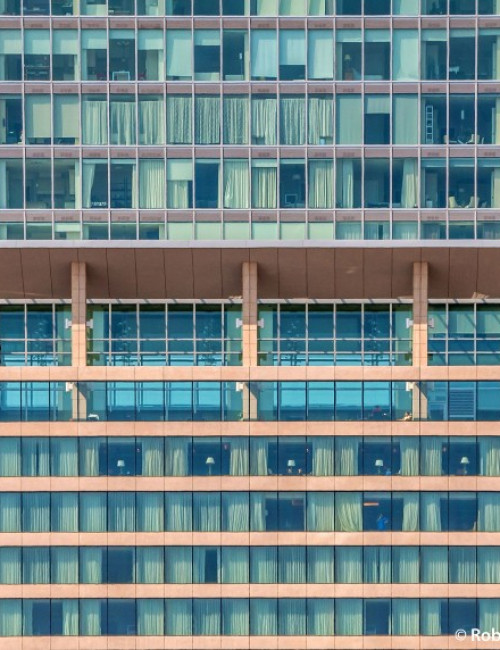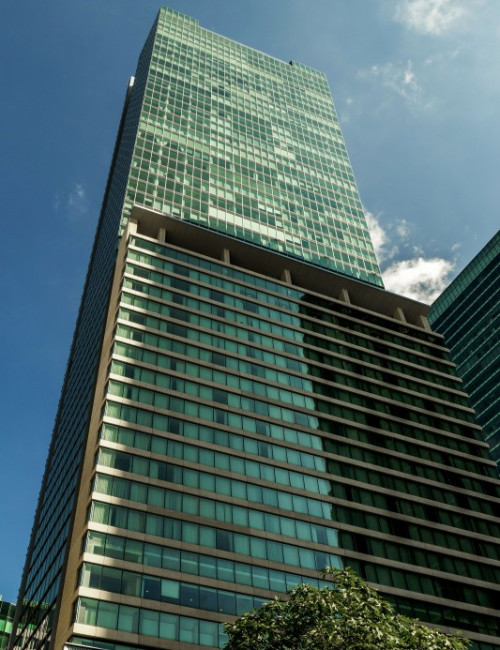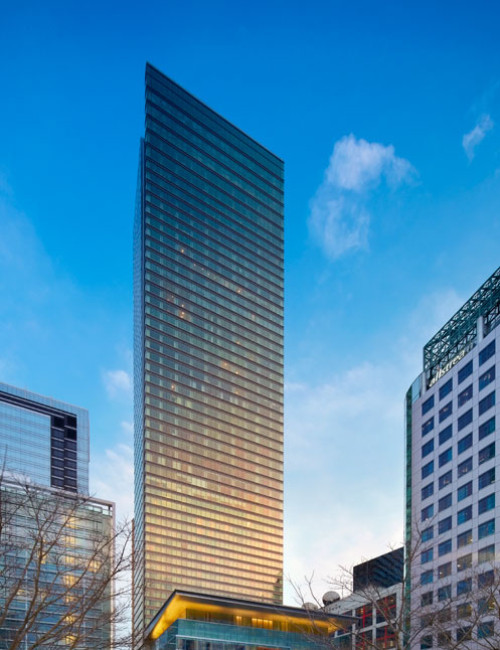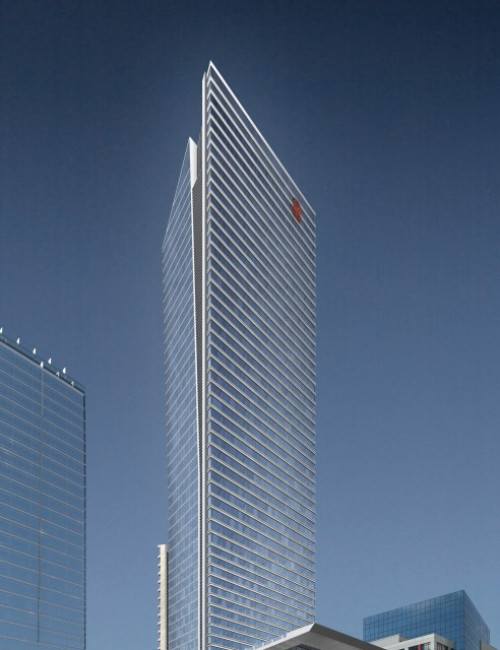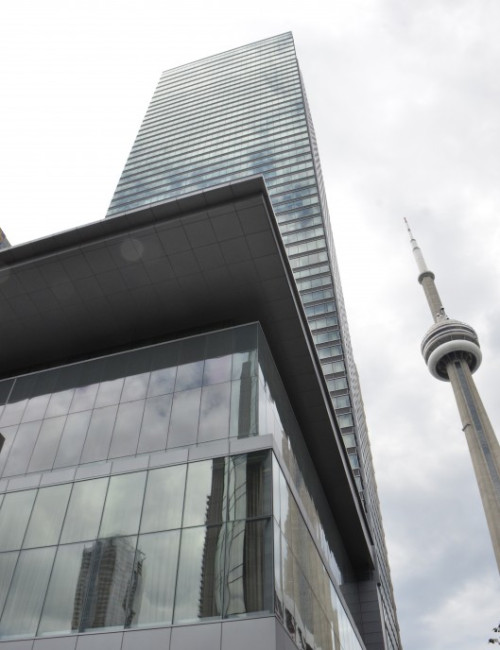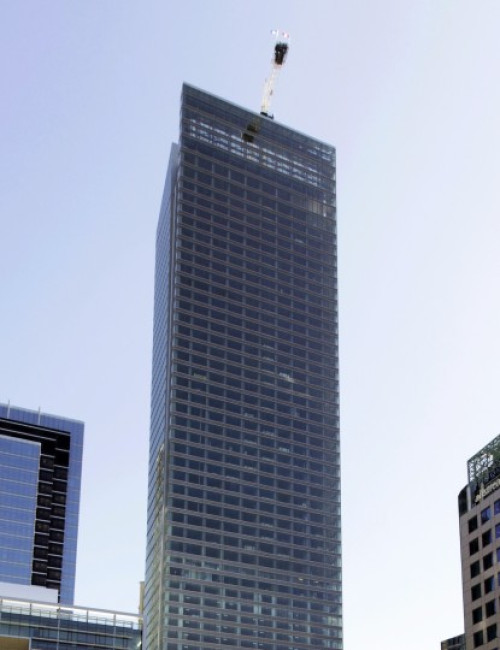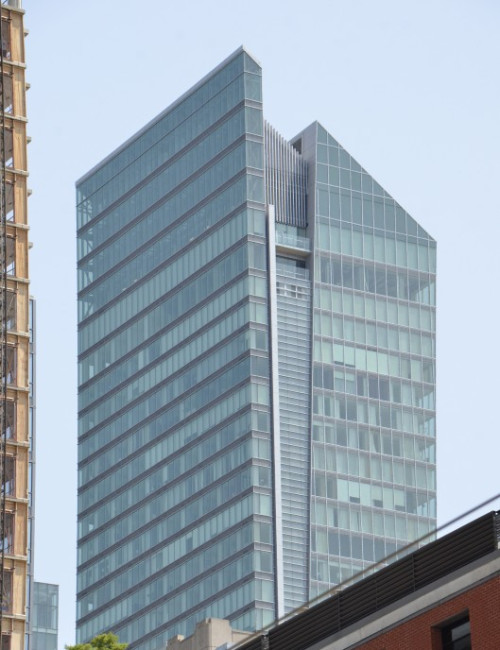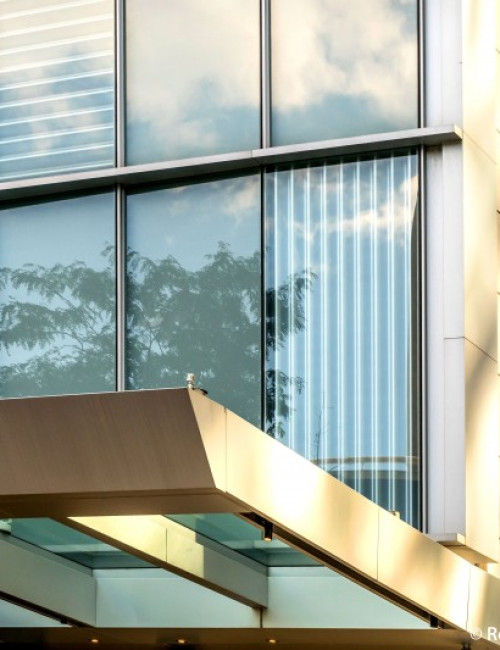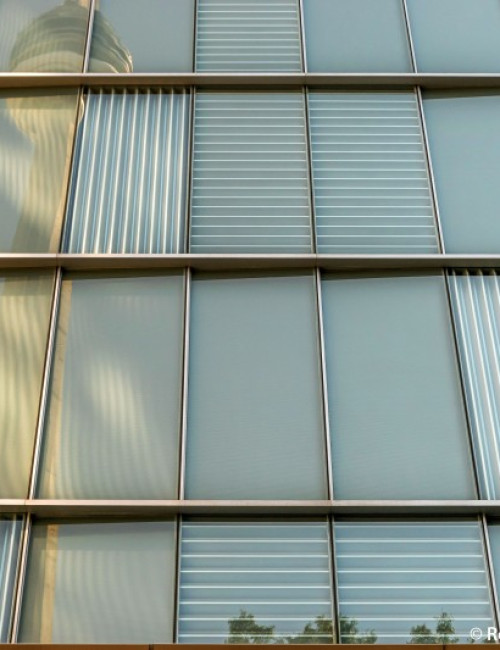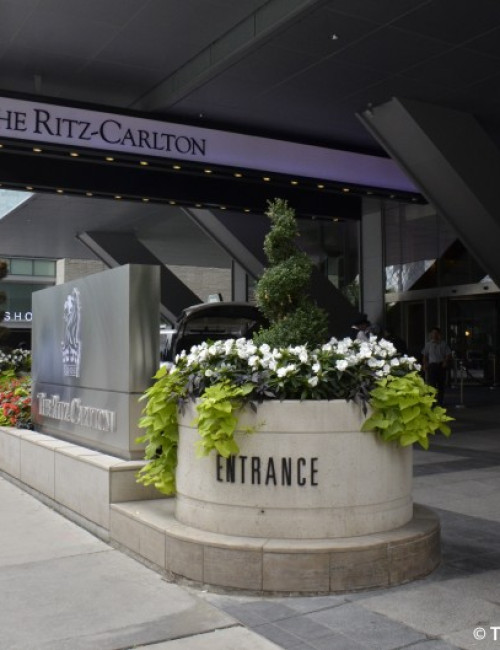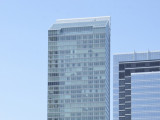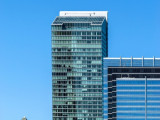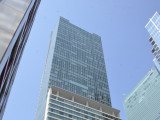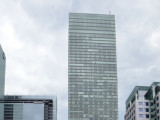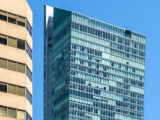Height rank
Ritz-Carlton Hotel & Residences
Toronto
-
Metrics
You must be a CTBUH Member to view this resource.
Official Name
Ritz-Carlton Hotel & Residences
Other Names
The Residences at the Ritz-Carlton
Type
Building
Status
Completed, 2011
Country
City
Address
Postal Code
M5V 0A1
Function
A mixed-use tall building contains two or more functions (or uses), where each of the functions occupy a significant proportion of the tower's total space. Support areas such as car parks and mechanical plant space do not constitute mixed-use functions. Functions are denoted on CTBUH "Tallest Building" lists in descending order, e.g., "hotel/office" indicates hotel function above office function.
residential / hotel
Structural Material
Both the main vertical/lateral structural elements and the floor spanning systems are constructed from steel. Note that a building of steel construction with a floor system of concrete planks or concrete slab on top of steel beams is still considered a “steel” structure as the concrete elements are not acting as the primary structure.
Reinforced Concrete
Both the main vertical/lateral structural elements and the floor spanning systems are constructed from concrete which has been cast in place and utilizes steel reinforcement bars.
Precast Concrete
Both the main vertical/lateral structural elements and the floor spanning system are constructed from steel reinforced concrete which has been precast as individual components and assembled together on-site.
Mixed-Structure
Utilizes distinct systems (e.g. steel, concrete, timber), one on top of the other. For example, a steel/concrete indicates a steel structural system located on top of a concrete structural system, with the opposite true of concrete/steel.
Composite
A combination of materials (e.g. steel, concrete, timber) are used together in the main structural elements. Examples include buildings which utilize: steel columns with a floor system of reinforced concrete beams; a steel frame system with a concrete core; concrete-encased steel columns; concrete-filled steel tubes; etc. Where known, the CTBUH database breaks out the materials used in a composite building’s core, columns, and floor spanning separately.
concrete
Official Website
Height
209.5 m / 687 ft
Floors Above Ground
54
Floors Below Ground
6
# of Apartments
159
# of Hotel Rooms
267
# of Parking Spaces
335
# of Elevators
19
Top Elevator Speed
3.5 m/s
Tower GFA
114,075 m² / 1,227,893 ft²
-
By function
You must be a CTBUH Member to view this resource.
-
By material
You must be a CTBUH Member to view this resource.
Proposed
Construction Start
Completed
Architect
Usually involved in the front end design, with a "typical" condition being that of a leadership role through either Schematic Design or Design Development, and then a monitoring role through the CD and CA phases.
Material Supplier
Material Supplier refers to organizations which supplied significant systems/materials for a building project (e.g. elevator suppliers, facade suppliers, etc).
Material Supplier refers to organizations which supplied significant systems/materials for a building project (e.g. elevator suppliers, facade suppliers, etc).
You must be a CTBUH Member to view this resource.
Owner
Simcoe Wellington Residences Inc.
Developer
Cadillac Fairview Corporation Ltd; Graywood Developments
Architect
Usually involved in the front end design, with a "typical" condition being that of a leadership role through either Schematic Design or Design Development, and then a monitoring role through the CD and CA phases.
Usually takes on the balance of the architectural effort not executed by the "Design Architect," typically responsible for the construction documents, conforming to local codes, etc. May often be referred to as "Executive," "Associate," or "Local" Architect, however, for consistency CTBUH uses the term "Architect of Record" exclusively.
Page + Steele / IBI Group Architects
Structural Engineer
The Design Engineer is usually involved in the front end design, typically taking the leadership role in the Schematic Design and Design Development, and then a monitoring role through the CD and CA phases.
Halcrow Yolles
MEP Engineer
The Design Engineer is usually involved in the front end design, typically taking the leadership role in the Schematic Design and Design Development, and then a monitoring role through the CD and CA phases.
The Mitchell Partnership, Inc.
Project Manager
The CTBUH lists a project manager when a specific firm has been commissioned to oversee this aspect of a tall building’s design/construction. When the project management efforts are handled by the developer, main contract, or architect, this field will be omitted.
The CTBUH lists a project manager when a specific firm has been commissioned to oversee this aspect of a tall building’s design/construction. When the project management efforts are handled by the developer, main contract, or architect, this field will be omitted.
Matthews Southwest
Main Contractor
The main contractor is the supervisory contractor of all construction work on a project, management of sub-contractors and vendors, etc. May be referred to as "Construction Manager," however, for consistency CTBUH uses the term "Main Contractor" exclusively.
The main contractor is the supervisory contractor of all construction work on a project, management of sub-contractors and vendors, etc. May be referred to as "Construction Manager," however, for consistency CTBUH uses the term "Main Contractor" exclusively.
EllisDon Construction Services Inc.
Other Consultant
Other Consultant refers to other organizations which provided significant consultation services for a building project (e.g. wind consultants, environmental consultants, fire and life safety consultants, etc).
Other Consultant refers to other organizations which provided significant consultation services for a building project (e.g. wind consultants, environmental consultants, fire and life safety consultants, etc).
Hirsch Bedner Associates; BAMO
Baker Real Estate Incorporated
The Ritz Carlton Hotel Company, LLC
Material Supplier
Material Supplier refers to organizations which supplied significant systems/materials for a building project (e.g. elevator suppliers, facade suppliers, etc).
Material Supplier refers to organizations which supplied significant systems/materials for a building project (e.g. elevator suppliers, facade suppliers, etc).
CTBUH Initiatives
Warm Weather Spaces Walking Tours 2015
17 September 2015 - Event
About Ritz-Carlton Hotel & Residences
The angled form of the tower gestures toward the primary views of Lake Ontario. At the same time, the floor plates steadily increase as the tower rises, adding area at the desirable upper levels. The tower’s form culminates in a soaring chiseled profile, which distinguishes this building on the city’s skyline. The podium relates to the base of the adjacent WSIB tower, as well as that of the CBC building, and helps to mediate between the pedestrian scale and the larger urban scale of the tower forms.
The building utilizes a high-performance curtain wall with double low-E insulating glass, thermal breaks, pressure equalization, and extra fire-rated thermal insulation. The tower features integrated exhaust and intake grilles in the spandrel area for fresh air on a floor-by-floor basis. Large vision glass areas provide natural day lighting into the living spaces. Enwave Energy Corporation provides cold water from the lake which eliminates the need for cooling towers and the energy to run them and associated pumps.
Subscribe below to receive periodic updates from CTBUH on the latest Tall Building and Urban news and CTBUH initiatives, including our monthly newsletter. Fields with a red asterisk (*) next to them are required.
View our privacy policy

